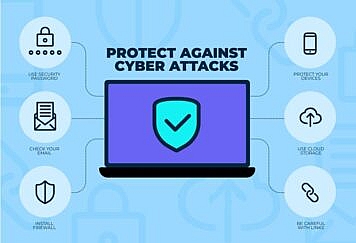In today’s interconnected world, the internet plays a vital role in our daily lives. However, not all internet connections are created equal, and internet speeds vary significantly around the globe. These speeds can profoundly impact users’ experiences, particularly when it comes to downloading and streaming content. In this article, we will delve into the different internet speeds worldwide and discuss how they affect viewers’ online experiences. Additionally, we will explore the future of internet speeds with the advancements in Wi-Fi 7 technology.
Understanding Internet Speeds and Their Measurement
Internet speed refers to the rate at which data is transferred between your device and the Internet. It is commonly measured in megabits per second (Mbps) and determines how quickly you can download or upload data.
According to ExpressVPN’s findings, countries like Monaco, Singapore, and Hong Kong have consistently topped the charts in terms of average internet speeds. These countries have invested heavily in robust infrastructure, including fiber-optic networks, providing their citizens with lightning-fast internet connections. In contrast, Africa and certain parts of Asia often face challenges delivering high-speed internet due to limited resources, inadequate infrastructure, and geographical constraints.
Impact on User Experience:
Slow internet speeds can significantly impact users’ online experiences, leading to frustration and inconvenience. Downloading large files or streaming high-quality content becomes time-consuming and prone to buffering issues with sluggish internet connections. On the other hand, fast internet speeds enable seamless and uninterrupted streaming, allowing users to enjoy their favorite movies, TV shows, and online gaming without interruptions.
Factors Affecting Internet Speeds:
Infrastructure:
The quality and availability of internet infrastructure, including cables, servers, and data centers, greatly influence internet speeds. Countries with well-developed infrastructure tend to offer faster and more reliable internet connections.
Technology:
The type of technology employed, such as fiber-optic or cable connections, can significantly impact internet speeds. Fiber-optic connections, known for their high bandwidth and low latency, provide faster speeds compared to traditional copper-based connections.
Network Congestion:
Internet speeds can fluctuate based on network congestion, particularly during peak usage times. Congestion occurs when there is a high demand for internet bandwidth, leading to slower speeds for users.
Advancements in Wi-Fi 7 Technology
Wi-Fi 7, the next generation of wireless technology, holds tremendous promise for revolutionizing internet speeds and connectivity. Wi-Fi 7 is expected to offer significantly faster speeds, lower latency, and enhanced capacity than its predecessors. The technology incorporates advanced features such as Multi-User Multiple Input Multiple Output (MU-MIMO) and Orthogonal Frequency Division Multiple Access (OFDMA), which improve efficiency and enable higher throughput.
Benefits of Wi-Fi 7 for Downloading and Streaming
Wi-Fi 7’s faster speeds will allow users to download large files, such as movies or software, in seconds. Streaming high-definition content will become seamless, eliminating buffering delays and providing an immersive viewing experience. The low latency offered by Wi-Fi 7 will be particularly advantageous for online gaming, reducing lag and improving responsiveness.
Implications for the Future
With the advancements in Wi-Fi 7 technology, internet speeds are poised to reach new heights in the future. Faster internet speeds will enable users to embrace new technologies and applications that require high bandwidth, such as virtual reality (VR) and augmented reality (AR). The growth of smart homes and Internet of Things (IoT) devices will be further facilitated by faster internet speeds, allowing for seamless connectivity and enhanced automation. Businesses will benefit from faster download and upload speeds, enabling more efficient communication, data transfer, and cloud-based services. Education and remote learning will be greatly enhanced with faster internet speeds, enabling seamless access to online resources, video conferencing, and collaborative platforms.
Overcoming Challenges and Bridging the Digital Divide:
While advancements in internet speed are exciting, it is crucial to address the digital divide between regions and communities. Governments, organizations, and service providers must work together to bridge the gap by investing in infrastructure, expanding connectivity, and providing affordable access to high-speed internet in underserved areas. Initiatives such as satellite internet and community-based networks can significantly extend internet access to remote and rural areas.
Final Thoughts
Internet speeds play a crucial role in shaping users’ online experiences, affecting everything from downloading large files to streaming high-definition content. Countries with faster internet speeds enjoy seamless connectivity and enhanced productivity, while regions with slower speeds face challenges in bridging the digital divide. However, the future looks promising with the advancements in Wi-Fi 7 technology. Wi-Fi 7’s faster speeds, lower latency, and increased capacity will pave the way for transformative experiences in downloading, streaming, online gaming, and emerging technologies. It is crucial for stakeholders to prioritize infrastructure development and address disparities in internet access to ensure that everyone can reap the benefits of a high-speed, interconnected world.
Follow TechStrange for more Technology, Business, and Digital Marketing News.





